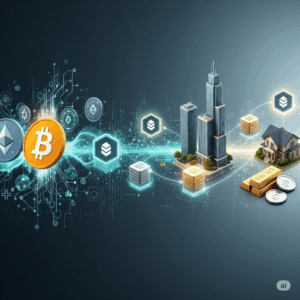The tokenization of assets has evolved from a niche crypto concept into a major force reshaping global finance. At its core, tokenization is the process of representing a real or digital asset as a digital token on a blockchain. In the early days, this primarily involved crypto-native assets, but the landscape has expanded to include everything from fine art to U.S. Treasury bills. This evolution is driven by the clear benefits of fractional ownership, enhanced liquidity, and programmable value. By 2025, tokenized assets have moved from a theoretical possibility to a practical solution, attracting significant institutional capital and creating new markets for traditionally illiquid assets. This article will break down the key phases of this evolution and explain why tokenization is becoming a cornerstone of the next generation of financial infrastructure.
How Did Tokenization Evolve from Crypto-Native to RWAs?
The journey of tokenization began with a focus on native digital assets before pivoting to bridge the gap between blockchain and the physical world. The initial phase was dominated by fungible tokens, a concept largely popularized by Ethereum’s ERC-20 standard. These tokens, which are interchangeable and divisible, gave rise to stablecoins. These early innovations, like USDC and Tether, proved that a digital token on a blockchain could represent the value of an external asset—in this case, fiat currency—and be transferred globally with near-instant settlement. This established the foundational principle of a transparent, auditable ledger for asset ownership.
As the technology matured, a new class of non-fungible tokens (NFTs) emerged, thanks to standards like ERC-721. Unlike their fungible counterparts, these tokens are unique and indivisible, making them perfect for representing individual pieces of digital art, collectibles, and other one-of-a-kind items. This phase demonstrated the power of blockchain to establish immutable proof of ownership for unique assets, paving the way for the fractionalization of high-value physical assets.
The most significant recent evolution is the tokenization of real-world assets (RWAs). This is where the digital and physical worlds truly merge. RWAs are physical or financial assets represented as digital tokens on a blockchain. This includes assets like real estate, private equity, government bonds, and fine art. This movement has been gaining serious momentum in 2025, as institutions have moved from experimentation to execution.
Major financial firms and fintechs are now launching products that offer compliant, regulated, on-chain access to short-term U.S. Treasuries and other yield-generating assets. The market for tokenized RWAs has surged, crossing the $25 billion mark in Q2 2025, a dramatic increase from just a few years prior. This growth is a clear signal that the financial world now sees blockchain as a viable infrastructure for both digital and traditional assets.
What Role Do Token Standards Play in This Evolution?
The development of specific token standards has been crucial to this evolution, each designed to meet the unique needs of different asset types. The ERC-20 standard was ideal for fungible assets like stablecoins, but it lacked the features necessary for security tokens that require compliance and transfer restrictions. This led to the creation of standards like ERC-1400, which was specifically tailored for security tokens. It allows for the embedding of regulatory compliance functionalities and transfer restrictions directly into the token’s smart contract, making it easier to tokenize assets like equities and real estate while adhering to legal requirements. The ERC-721 standard, conversely, laid the groundwork for NFTs by enabling unique identifiers for each token. Without this continued innovation in token standards, the market for real-world assets would not have been able to develop in a regulated and scalable way.
What Are the Key Benefits Driving Institutional Adoption Today?
The rapid institutional adoption of tokenized assets is not based on hype, but on a clear set of benefits that solve long-standing problems in traditional finance. This shift is a direct response to the inefficiencies and limitations of legacy systems. The institutional era of tokenization is here, driven by a need for more efficient and transparent financial infrastructure.
- Fractional Ownership: Tokenization democratizes access to traditionally exclusive assets. By dividing an asset like a luxury property or a piece of fine art into hundreds or thousands of digital tokens, investors can purchase fractional shares at a much lower price point. This opens up opportunities for a broader range of investors, creating new demand and increasing the overall market for these assets.
- Enhanced Liquidity: Many traditional assets, such as real estate or private equity, are notoriously illiquid. Selling these assets can be a lengthy and complex process involving extensive paperwork and multiple intermediaries. Tokenization allows for these assets to be traded on secondary markets 24/7, just like cryptocurrency. This dramatically shortens the transaction cycle from weeks or months to minutes, making assets more liquid and appealing to a wider pool of investors.
- Transparency and Trust: A key benefit of blockchain is its transparent and immutable ledger. All transactions and ownership records are permanently stored on the chain, accessible to anyone. This eliminates the need for trusted third-party intermediaries for verification, reducing the risk of fraud and improving investor trust. Smart contracts further enhance this by automating processes like dividend payouts or royalty distributions, ensuring they are executed exactly as programmed without human intervention. The immutability of the blockchain provides a high degree of confidence and auditability that is not possible with traditional paper-based systems.
- Improved Efficiency and Cost Savings: Traditional financial systems rely on a complex web of intermediaries, including brokers, custodians, and clearing houses. Each layer adds cost, time, and administrative complexity. By putting assets on a blockchain, tokenization streamlines these processes. Transactions can be settled near-instantly without the need for manual paperwork or a separate clearing process. This automation leads to significantly lower operational overhead and transaction fees.
This table provides a high-level comparison of how tokenization improves upon traditional financial systems:
|
Feature |
Traditional Assets |
Tokenized Assets |
|
Ownership |
All-or-nothing, illiquid |
Fractional, highly divisible |
|
Liquidity |
Low, long sales cycles |
High, 24/7 secondary markets |
|
Settlement |
Days or weeks |
Near-instant |
|
Verification |
Relies on intermediaries |
Transparent, immutable blockchain ledger |
|
Costs |
High, administrative overhead |
Lower, automated by smart contracts |
Exportar para Sheets
What Are the Future Trends Shaping the Tokenization Landscape?

As we look beyond the initial wave of institutional adoption, several key trends are set to define the future of tokenization. The current market, while growing, still represents a fraction of the total addressable market of global assets. The next phase will be characterized by greater regulatory clarity, increased interoperability, and the integration of tokenized assets into the broader financial system.
A Callout on Regulations and Interoperability:
- Regulatory Clarity: Global regulators are increasingly engaging with tokenization. Jurisdictions are working to create clear legal frameworks for tokenized securities and other assets. This regulatory clarity is a critical catalyst for mainstream adoption, as it provides a predictable environment for both institutions and investors.
- Interoperability: The lack of seamless communication between different blockchains is a major hurdle. To create a truly global and liquid market, platforms must be able to interact and transfer assets across chains. Protocols and bridges that enable this interoperability are a key area of focus for development in the coming years.
The development of a “hub-chain” or a “network of networks” is a major focus, as it will be essential for connecting disparate tokenization platforms and ensuring that assets can move freely. This is the next frontier for the industry.
We are also seeing the emergence of more sophisticated tokenized products. While tokenized treasuries and private credit have dominated the institutional space in 2025, the next wave will likely include more complex derivatives, tokenized carbon credits, and advanced financial products that leverage the programmability of smart contracts. The total market capitalization of tokenized RWAs is projected to grow exponentially, indicating that this trend is not just a passing fad but a fundamental transformation of how value is created, owned, and exchanged. The industry is currently building the infrastructure for a future where a significant portion of all global assets will reside on a blockchain.
Key Takeaways
- Tokenization has evolved from crypto-native assets like stablecoins and NFTs to a focus on real-world assets (RWAs).
- Institutional adoption is driving a surge in the market for tokenized RWAs, particularly U.S. Treasuries and private credit.
- Key benefits include fractional ownership, enhanced liquidity, transparency, and improved efficiency over traditional systems.
- Token standards like ERC-1400 are crucial for enabling regulatory compliance and the transfer of security tokens.
- The future of tokenization will be defined by greater regulatory clarity, improved cross-chain interoperability, and the expansion into more complex financial instruments.
Conclusion
The evolution of tokenized assets has been a compelling journey from niche digital curiosities to a transformative force in global finance. As of 2025, the market has matured significantly, with a clear focus on tokenizing real-world assets to solve persistent problems in liquidity, accessibility, and transparency. This shift is being fueled by institutional demand and the continued development of robust, compliant infrastructure. The future will likely see a continued acceleration of this trend, as the technological and regulatory frameworks become more established. By making assets more liquid, accessible, and transparent, tokenization is not just digitizing existing markets; it is creating a more efficient and equitable financial system for the future.
FAQ
What are tokenized assets? Tokenized assets are digital representations of real or physical assets, such as real estate, fine art, or stocks, that are recorded and managed on a blockchain. This process creates a digital token that represents ownership or a share of the underlying asset.
How does tokenization increase liquidity? Tokenization increases liquidity by converting illiquid assets into fractional, divisible tokens that can be traded on digital markets 24/7. This allows asset owners to sell smaller portions of their assets without a lengthy and complex traditional sales process.
What is a real-world asset (RWA)? A real-world asset (RWA) is any tangible or intangible asset that exists outside of a blockchain, such as real estate, government bonds, or commodities. When these assets are represented by digital tokens on a blockchain, they are referred to as tokenized RWAs.
What is the difference between a fungible and a non-fungible token? Fungible tokens are interchangeable, meaning each token is identical to the next and holds the same value, like a stablecoin. Non-fungible tokens (NFTs) are unique and cannot be exchanged for one another on a one-to-one basis, making them suitable for representing one-of-a-kind assets like art or collectibles.
How does tokenization improve transparency? Tokenization improves transparency by storing all ownership and transaction records on a public, immutable blockchain ledger. This allows for real-time auditing and verification of ownership without the need for a central authority, building greater trust and accountability.




